Shaping the future.With partners.
New Welcome to our Partnership Page! Through these partnerships, we aim to advance scientific understanding and develop cutting-edge solutions for researchers in the electrochemistry domain to offer you a smooth user experience. Join us on this journey to unlock new possibilities in scientific exploration and innovation.
AWSensors.
Quartz Crystal Microbalance
By joining forces with AWSensors, a renowned leader in precision quartz crystal microbalances (QCM-D), BioLogic is furthering our commitment to providing cutting-edge instrumentation for electrochemistry research. Our partnership enables seamless integration of AWSensor’s advanced sensing technology with BioLogic’s industry-leading potentiostats, to perform electrochemistry driven experiments (eQCM-D). eQCM-D can be used to detect mass changes during electrodeposition or corrosion of a metallic sample, empowering researchers with unprecedented accuracy and insight into molecular analysis to measure mass, thickness and viscoelasticity of films. One of the growing applications for this solution is in the field of energy storage and conversion devices. eQCM-D can be used to study intercalation/deintercalation of ion into electrodes, study solid electrode interface (in operando) and to study the incorporation/ exchange in membranes.
To learn more about this partnership please visit AWSensors
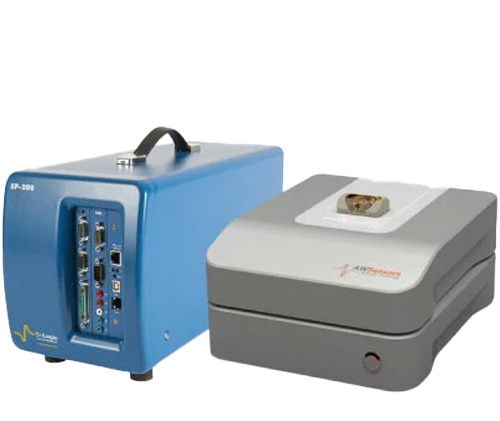
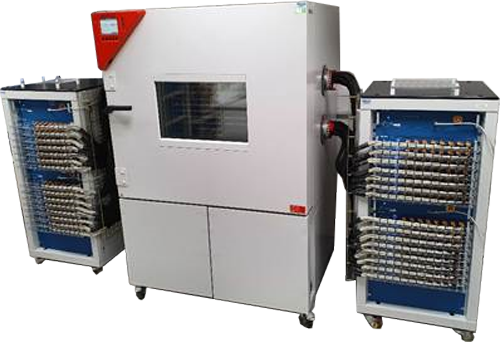
Binder.
Climate Chambers
BioLogic has made it even easier to control battery testing environments with Binder climate chambers. Using EC-Lab & BT-Lab with the TCU server installed, users can connect and control the regulator for Binder’s MK series climate chambers. By regulating environmental conditions during battery testing, researchers can obtain accurate and reliable data, ensure device safety, make direct comparisons and assess performance under a variety of conditions. This information is crucial for battery development and optimization and for selecting the most suitable battery technology for specific applications. (photo by courtesy of Copley Group at WMG)
To learn more about this partnership please visit Battery Test Chambers
Bruker scientific.
X-Ray Diffractometer
Bruker’s D8 ADVANCE XRD gains a powerful advantage with the addition of BioLogic’s SP-50e potentiostat. By combining diffractometry and potentiometry researchers can gain not just qualitative but quantitative and microstructural information from battery cells. BioLogic is the perfect partner for this application, as typical experiments consist of hundreds of diffraction patterns over days, requiring reliable and precise potentiometry. As a sample of battery material runs through its charge/discharge cycle, structural changes occur and by using X-ray diffraction, in operando changes in phase composition are quantified and distortions in the crystalline lattice are determined. These distortions provide valuable information regarding a battery cell’s change in volume as it charged and discharged.
To learn more about this partnership please visit Bruker’s Application Note.
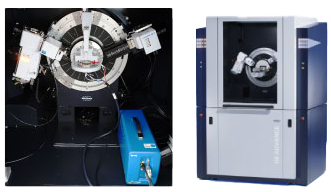
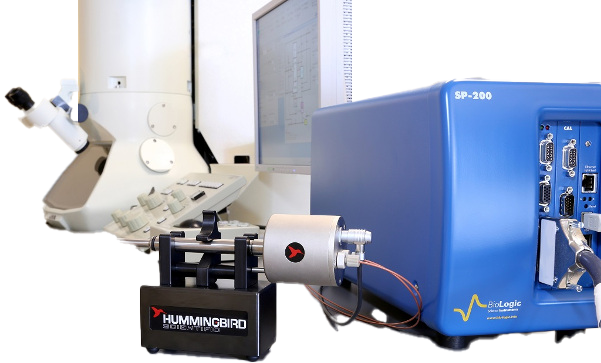
Hummingbird scientific.
Transmission Electron Microscopy
Hummingbird is working in collaboration with BioLogic to provide a solution for analyzing battery materials using Transmission Electron Microscopy (TEM). BioLogic’s SP-200 potentiostat can be connected to Hummingbird’s liquid flow cell holders to investigate corrosion, electrochemistry, electrolysis and battery research. The cell holder is equipped with an electrochemical chip, available in a variety of configurations and materials. BioLogic’s expertise in low-noise potentiostats provide researchers with precise data, important when working on a micro-scale. Using TEM to image battery materials in-situ provides insight into the fundamentals of ion transfer and leads to a better understanding of battery materials.
To learn more about this partnership please visit Hummingbird’s Electrochemistry Liquid System
Malvern panalytical.
X-Ray diffraction analysis (XRD)
Studying batteries through thousands of charging cycles at various temperatures can be time consuming. Not only can measurements last days but data analysis on thousands of XRD scans can be challenging and time consuming. Malvern Panalytical offers a single-stop fully integrated solution that synchronously controls the Empyrean X-ray diffractometer, the temperature environment of the battery cell (VTEC-trans), and Biologic potentiostats. Convenient and battery protection features, supported by SP-50e/150e potentiostats, are built into the software for an easy-to-use user interface that ensures productive experiments. The HighScore Plus data analysis software enables an effective, fast, and automated process through user customized smart batches. As a result, the dynamics of the battery material phase compositions are quantified and displayed intuitively. Obtain high quality in-operando results with this comprehensive and productive battery research solution.
Find more information about our Empyrean XRD, please visit our partner Malvern Panalytical’s note.
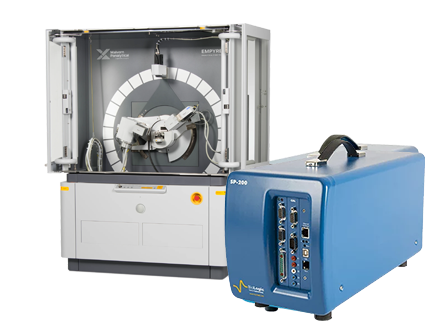
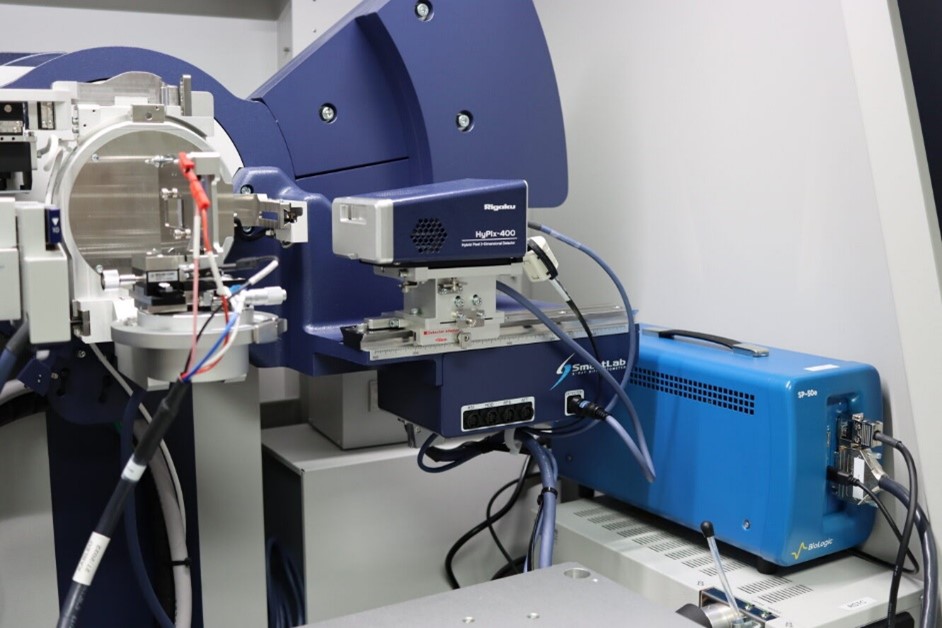
Rigaku.
X-Ray Diffractometer (XRD)
Essential for battery researchers, Rigaku offers a variety of auto-aligning battery stages for the SmartLab that allow XRD on fully functional cells in the form of coin cells, pouch cells, and even pressured solid-state cells. This enables battery researchers to easily perform in-situ and operando testing of their advanced cell chemistries to study microstructure and phase changes at various states of charge (SOC) and temperature. This analysis is critical in understanding and quantifying volume changes due to SOC and defect-related changes in the lattice structure of crystalline materials. BioLogic potentiostats are a key component in Rigaku’s fully automated Operando XRD (charge/discharge during XRD scanning) solution by providing an integrated triggering solution to synchronize the potentiostat with the XRD instrument, combined with exceptional performance, reliability and ease of use. Several BioLogic potentiostats, such as the SP-50e, SP-150e, SP-300 and others have been fully integrated with the SmartLab software to allow seamless Operando XRD analysis of advanced battery cells. For more information about Rigaku’s x-ray analytical solutions for battery research, go to: battery.rigaku.com.
Spectro Inlets.
EC-MS Applications
Spectro Inlets has teamed up with BioLogic for the first and only turnkey solution for real time mass spectrometry analysis of electrochemical reactions (EC-MS). Measuring gas evolution as a function of applied potential has vast applications in electrolysis, fuel cells, battery applications and fundamental electrochemistry studies. By combining a microchip inlet with a mass spectrometer, vacuum and gas-handling system into one benchtop instrument, researchers can measure composition changes of volatile species with a time resolution down to 0.1 seconds with high sensitivity – both in aqueous and non-aqueous electrolytes. With the ability to measure continuous product formation, Biologic SP-200 potentiostat is perfect pairing for this application due to its high sensitivity (down to 100 pA). Quantitative analysis of evolved volatile products provides researchers with valuable information on the degradation of electrodes and electrolytes and the effect of different catalysts on half-cells.
To learn more about this partnership please visit Spectro Inlets EC-MS applications.
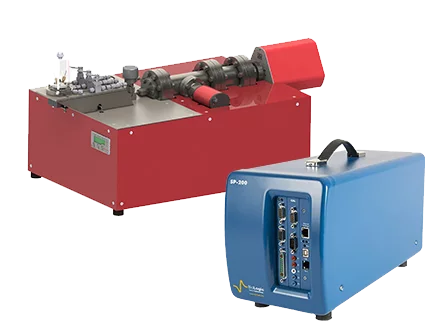
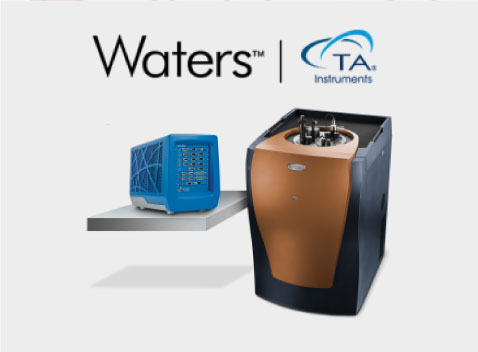
TA Waters.
Microcalorimeter
BioLogic’s VSP 300 Potentiostat, used in tandem with the Battery Cycler Microcalorimeter Solution from TA Instruments (a division of Waters Corporation), provides a fully integrated, non-destructive, in operando solution to assess the efficiency of new cell chemistries. By measuring a battery’s electrochemical and thermal data concurrently with TA’s TAM IV Microcalorimeter, researchers can better identify degradations due to parasitic reactions. BioLogic’s precise instrumentation is the ideal partner for this solution, due to the exacting current needed for low C-rates. This system can accommodate multiple cell formats including coin, cylindrical and pouch cells. Experimental set-up and data acquisition are controlled by one integrated software interface (TAM Assistant), which automates data integration, plotting, and calculations for parasitic heat. Usually long experimental times can now be reduced to days or weeks, thanks to the ability to test up to 12 batteries simultaneously in discrete experiments. This allows researchers to quickly evaluate the efficiency of new cell formulations, providing powerful insights into lifetime prediction models, thermal management, safety testing, and fundamental material chemistry.
To learn more about this partnership please visit TA Waters’ Battery Cycler Microcalorimeter Solution.
Request a partnership!
Interested in a partnership with us? Please fill out the form and we will get back to you.
Need support?





